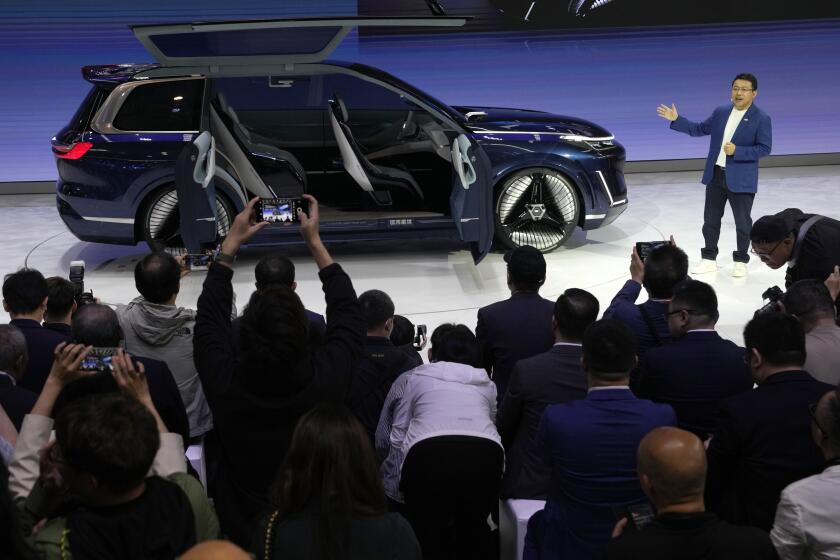Grocery Pact Seen as ‘Only Days Away’
Talks aimed at ending the Central and Southern California supermarket strike and lockout, described as “intense” by the union, continued for a 10th straight day Friday, and one analyst said a settlement could be “only days away.”
Extending the longest streak of talks since the labor dispute began more than four months ago, negotiators for the United Food and Commercial Workers union and the three grocery chains involved continued meeting under the supervision of federal mediator Peter J. Hurtgen.
The bargaining was expected to continue today, though a final determination was not expected to be made until late Friday.
Both sides are not publicly discussing details of the talks at the request of Hurtgen, director of the Federal Mediation and Conciliation Service. But the UFCW’s Local 770 in Los Angeles, the largest of the seven union locals affected by the dispute, said on its website that “these are extremely intense negotiations.”
The marathon bargaining also suggests that the 59,000 idled grocery workers and the stores’ stockholders “have metaphorically locked the various parties in a room and won’t let them out without a deal,” analyst Mark Husson of Merrill Lynch & Co. said in a report Friday.
“We could now be only days away from an announcement,” he said.
The UFCW struck Safeway Inc.’s Vons and Pavilions chains Oct. 11, and the next day Kroger Co.’s Ralphs and Albertsons Inc. -- which are bargaining jointly with Safeway -- locked out their union workers.
The stores are trying to slash their labor costs, particularly their costs for workers’ healthcare benefits, on grounds that they need to better compete with nonunion retailers such as Wal-Mart Stores Inc. that are expanding in the grocery business.
Wal-Mart is the nation’s largest grocer, and its employees earn considerably less in wages and benefits than supermarket employees.
The UFCW contends that the proposed cuts would make a quality healthcare plan virtually unaffordable for its members, and union and community organizers have stepped up public demonstrations in Southern California to protest the effort.
Husson said in his report that though the Wal-Mart threat was real in smaller towns, it was “being greatly overestimated in big cities,” where “the likes of Kroger, Safeway and Albertsons are holding [market] share and weaker chains are declining.”
The supermarkets see the threat mostly from Wal-Mart’s Supercenters, which have a full grocery store inside. The first Supercenters in Southern California are expected to open this year.
Nationwide, Wal-Mart’s Supercenters will generate grocery sales of $58 billion this year, or 10% of total U.S. grocery sales, Husson estimated. That doesn’t count the billions of dollars in additional grocery sales at Wal-Mart’s conventional mass- merchandise stores.
Cincinnati-based Kroger, the largest traditional grocery chain, has annual sales of about $53 billion.
More to Read
Inside the business of entertainment
The Wide Shot brings you news, analysis and insights on everything from streaming wars to production — and what it all means for the future.
You may occasionally receive promotional content from the Los Angeles Times.









